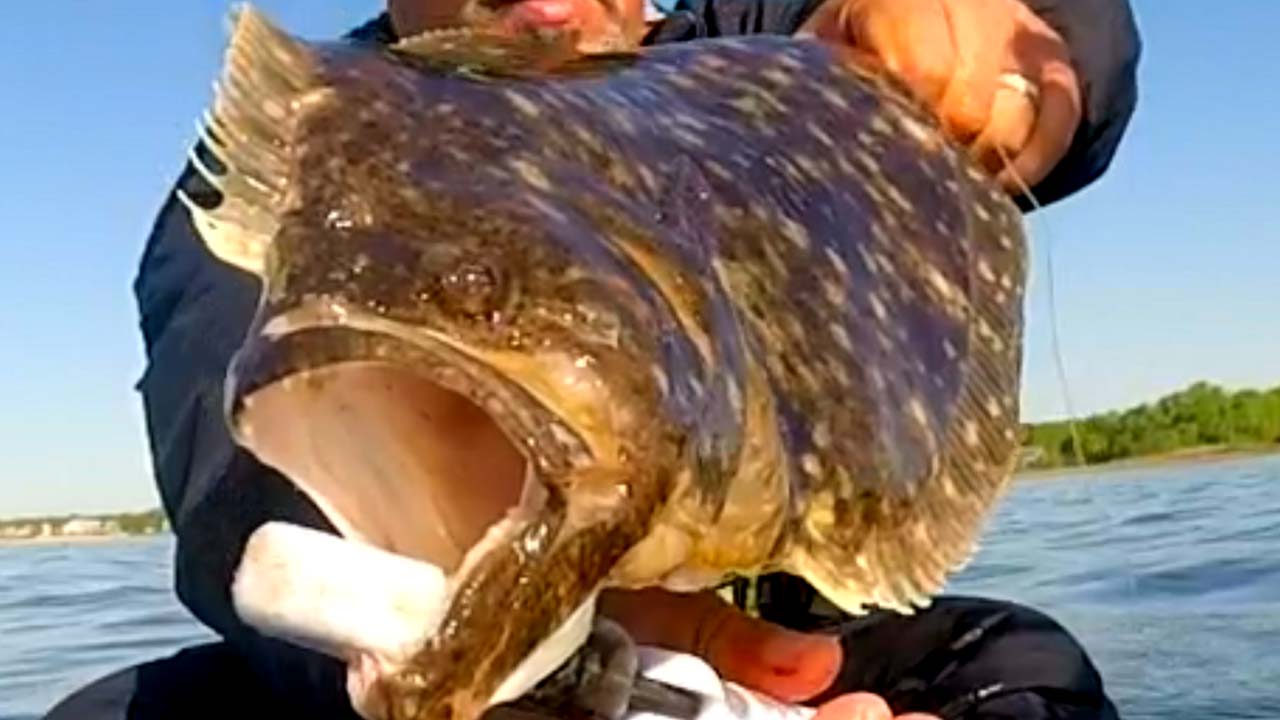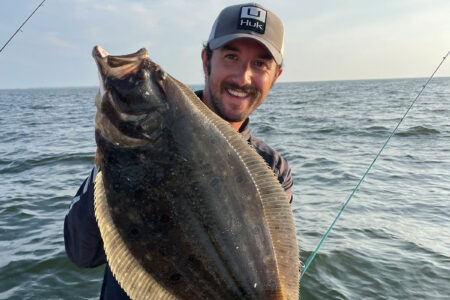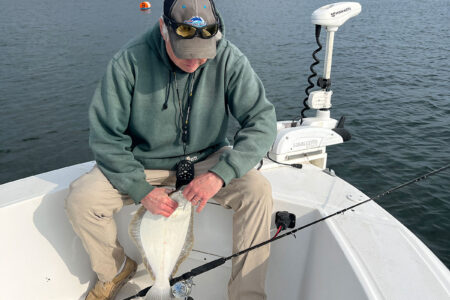
Seek out the shallow depths for a good spring flatfish session.
Summer flounder season is upon us, and we now look forward to another season of dodging boats and wave runners in search of trophy flatfish. The batteries have been charged, the reels have fresh braid, and the hooks and jigs are all neatly packed away in tackle boxes. We enter the season with intense optimism and anticipation, but quite often without an early-season plan.
Most fishermen will head out on the water focused on hitting the best spots from the previous season. Often these spots look like long channels or deep holes near points. These areas can be excellent producers however, spring fishing for flounder can prove to be challenging due to one very important, and often overlooked factor—water temperature.
Water temperatures will be among the most important factors to consider when planning for early season trips. In May, the temperatures normally range from 48 to 65 degrees along the coast of New Jersey, through Long Island and up to Massachusetts and can pose some problems to fishermen. This temperature range is typically considered the low-end of the optimal feeding temperatures for summer flounder. Simply put, when the water temperatures are on the lower end, this means flounder will often be searching for warmer pockets of water.
This is where targeting flounder from a kayak can offer a significant advantage.
Kayak fishing provides anglers with the ability to get into the skinny backwaters. When water temperatures are below 60 degrees, significant advantages can be had by finding these warm “pockets”. The best source of heat in the backwaters is brought to you courtesy of the mud and sun working together. When the darker color of the mud on the flats is combined with the sun you will nearly always find a nice bump-up in water temperatures. This is not to say the water is always dramatically warmer however, any increase in temperatures can draw flatties into an area.
As ambush predators, summer flounder rely on their ability to hide within structure to await the arrival of unsuspecting prey. Quite often structure can be defined by large rock formations, reefs, wrecks, and severe depth changes. One would think this could eliminate mud flats as a viable location to target, however there is more structure on a flat than many people believe. In water that is less than 3 feet deep, structure is defined differently. Rather than seeking large rocks, drop-offs and reefs, focus should shift to small depth changes, vegetation, and oyster beds. Even the smallest rock on a flat can be as enticing as a series of reef-balls dropped offshore. A pothole (a depression on the bottom of a flat) is quite often as solid an area to fish as a drop-off in the main channels. Eel grass can produce an excellent ambush point for them nearly as well as a wreck.
As mentioned before, summer flounder are ambush predators. Structure must be present in some form or fashion, however that is only half of the equation. We also need to turn our attention to water currents. The best structure won’t help if there isn’t any forage passing by for the fish to ambush. Once you find the flat and identify structure you now must determine whether that structure has sufficient current flow. This movement of water needs to be strong enough to sweep baitfish, crabs, shrimp or other prey through the identified area. Any amount of current that can push bait in a predictable direction or pathway can be productive.
Finally let’s talk about the areas immediately surrounding the flats. As water recedes on the outgoing tide, warmer water will push out into areas surrounding the flats. At this point you will want to look for the structure and the currents that are fed by the warmer waters. Small drop-offs, chokepoints and creeks make excellent choices.
This spring, instead of picking up where you left off and heading directly to the best summer fishing spots, consider the many advantages offered by fishing flats. As a Kayak angler, the best advantage in your toolbox is the ability to access these waters. In the spring, skinny waters often lead to fat fish.



